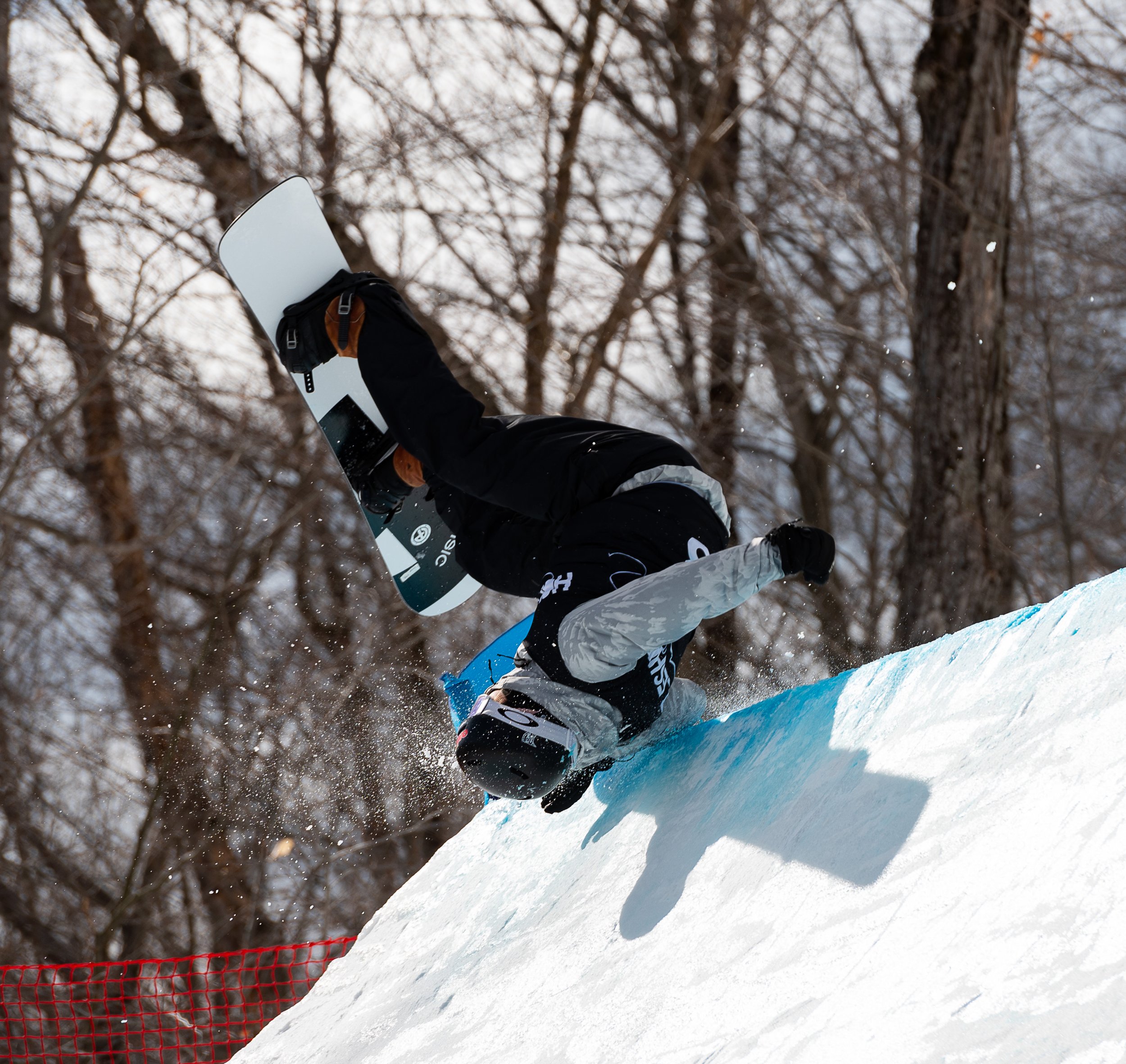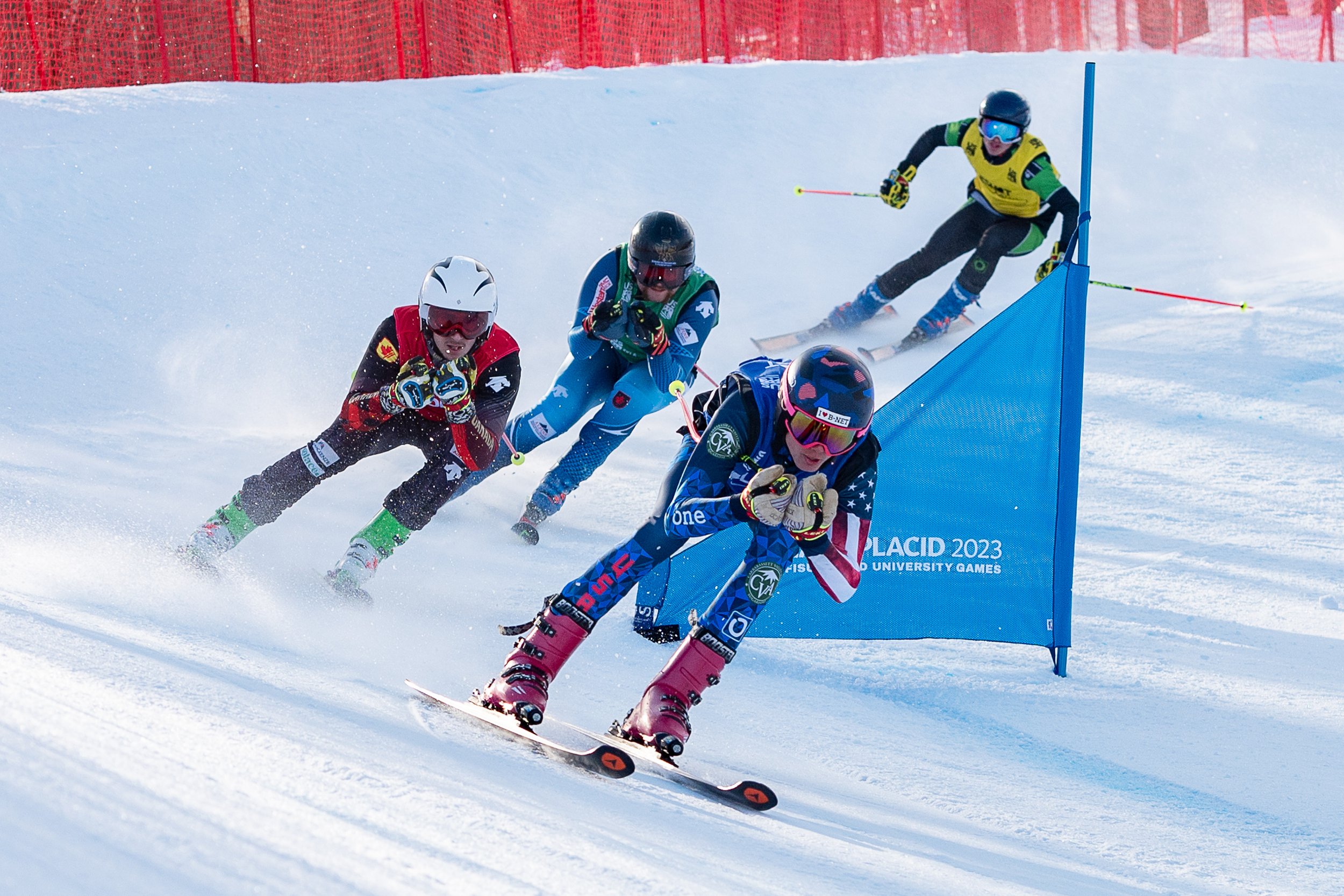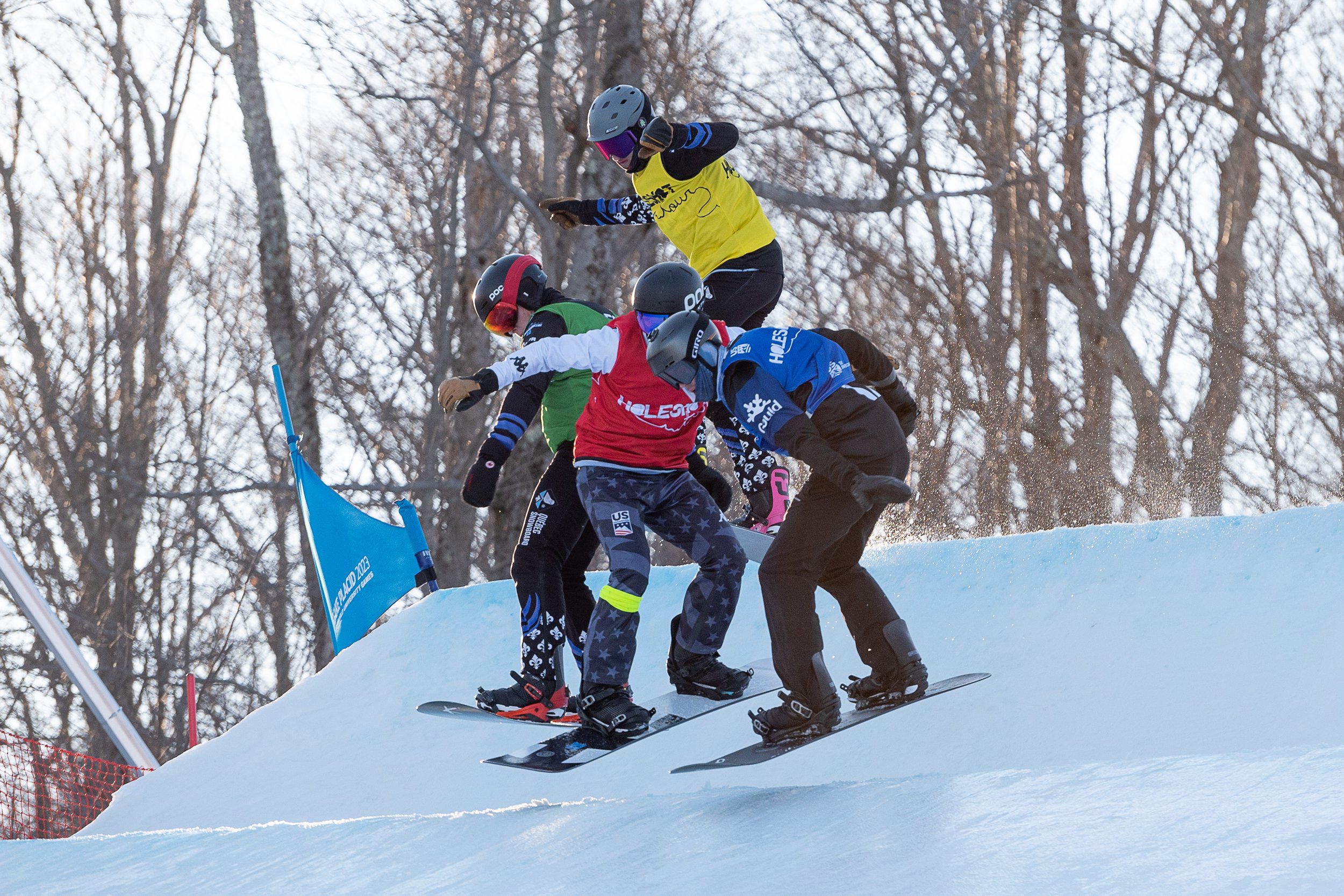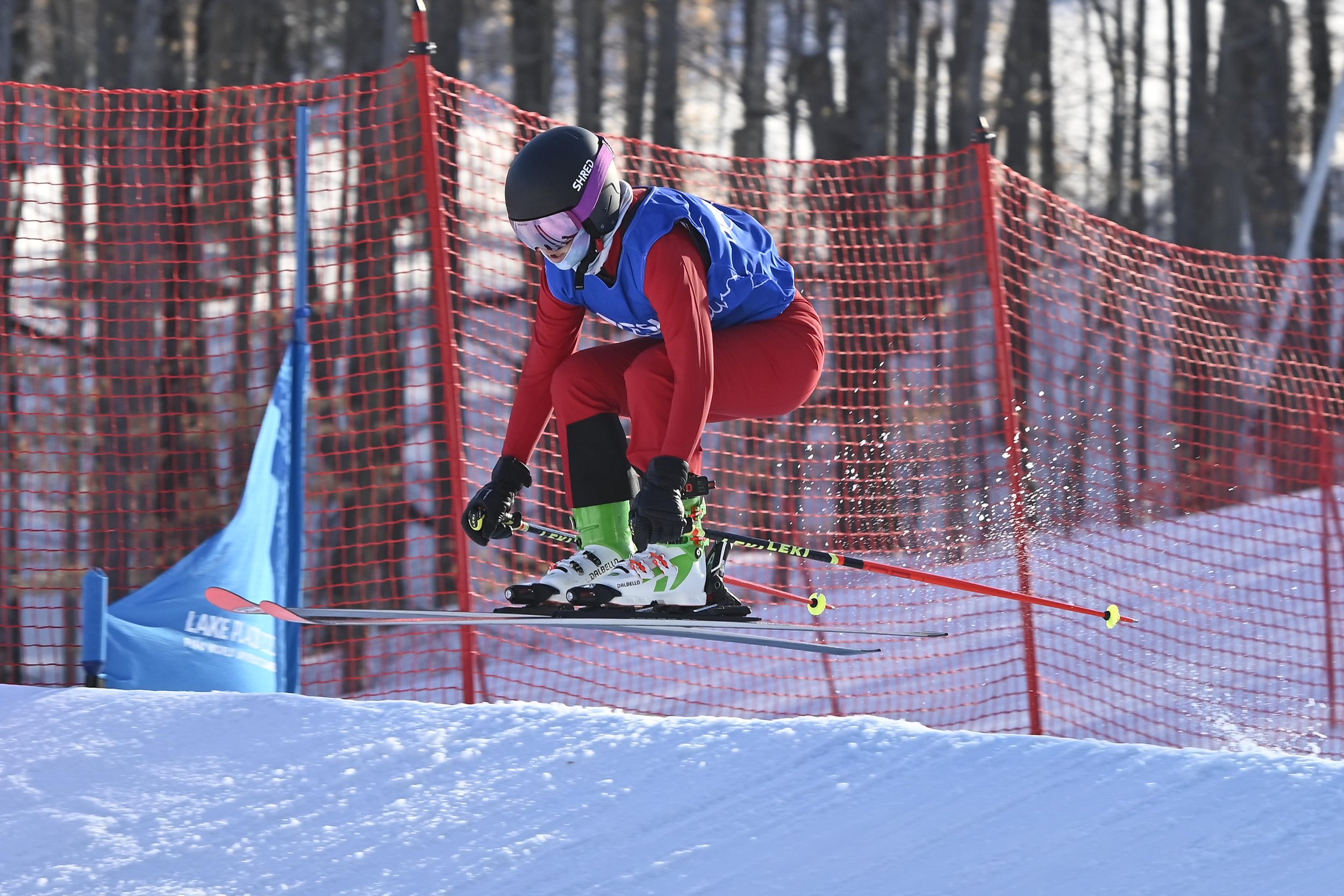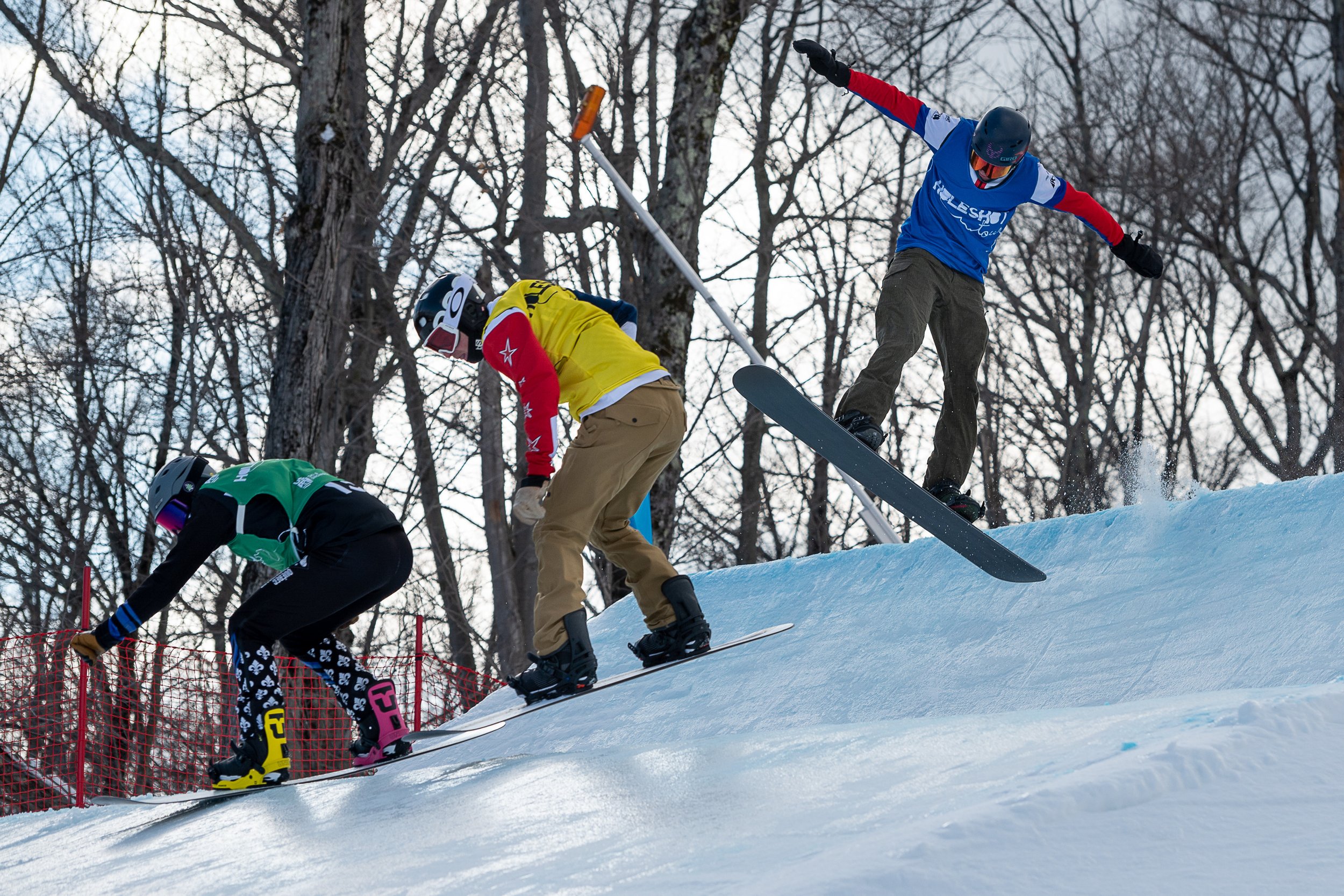What the heck are Ski & Snowboard Cross?
By Jenn March
The ski and snowboard cross course for the Holeshot X Tour at Gore Mountain two weeks ago can be described in two words: fun and terrifying. After having only a vague idea of what to expect from the sport—I imagined four fellows or ladies bombing down a jump-laden course at ridiculously high speeds—the experience of watching it exceeded expectations regarding both the levels of peril and entertainment. The course ran beneath Gore’s gondola and was very similar to that used for freestyle competitions during the FISU World University Games, which happened earlier in the season. There were seven turns, all of which preceded jumps where skiers and boarders flew off in pods of three or four, one after another with poles and hands whirling wildly in the air.
Both ski and snowboard cross are fairly new sports originating in the 1970s at Alyeska Ski Resort in Alaska when a group of racers and an employee, Scott Hunter, wanted to create something new and interesting that took advantage of the resort’s sinewy terrain. As if flying through gully-like terrain off jumps four racers at a time wasn’t dangerous enough, the initial skiers who participated could legally check each other like hockey players to throw fellow competitors off balance. Racers sustained frequent injuries, as you can imagine. But participation at Alyeska’s original “silvertip” track luckily dropped off as the athletes who participated either graduated high school or moved on to compete in events made official by the FIS (International Ski Federation). There were several injuries while I was at Gore, one of which caused a half hour delay and required a rider to be back-boarded and taken off the mountain by ski patrol. And that was just a solo qualifying run where the rider fell off a jump.
In the 1980s, cross had a resurgence when Jim “Too Tall” Essick, who worked in sports marketing, was inspired to bring the excitement of motocross to the ski/ride world. While his idea was pitched to several corporate sponsors, it never really took off until 1991 when a TV show called “Greg Stump’s World of Extremes” aired a segment on “boardercross.” It was snowboarders this time who were trying the niche sport on a snow-covered motocross track in Blackcomb, British Columbia, Canada. The riders in the video dawned things like motorcycle helmets and leather jackets, or just commando with pants, sports bra, and brightly colored googles. Outfits that screamed 1990s spring ski bum, not unlike those worn in the dorky 1990 comedy Ski Patrol. The turns of the course were described by Stump as “bobsled-like” followed by one of the seven motocross-like turns.
The sport of Boardercross, or SBX, made its official debut at the World X Games in 1997 along with its skier counterpart, ski cross (SX). Intentional contact with other racers was banned as both SBX and SX went mainstream. By 2004, FIS added ski and snowboard cross to freestyle events such as moguls, aerials, and halfpipe. In 2010, the sports were added to the Winter Olympic Games in Vancouver, BC. Snowboarders especially benefitted from this new outlet for their sport; whereas just a couple of decades before in the Olympics, all riders had to compete in were slalom or halfpipe.
Today, ski cross is wildly popular in Canada, with the nation having had 137 medals in the FIS World Cup, 15 in the X Games, and three in the Olympics. But athletes come from all over; in addition to North America, the World Cup circuit includes nations in Europe that commonly hold alpine racing such as Germany, France, and Switzerland. Interestingly, however, countries that are not on the regular alpine circuit like Bulgaria and Georgia commonly hold both SX and SBX competitions. SX and SBX are popular in Japan as well, with athletes coming from the island nation to compete in the World Cup circuit—not something you usually see in the World Cup for alpine racing, which is heavily dominated by Europeans and North Americans.
Overall, attending Gore’s junior SX/SBX event really turned me on to the sports. Standard alpine racing is exciting, especially when you’re watching history unfold with Mikaela Shiffrin, who will likely be remembered for years to come as the greatest ski racer of all time. But SX/SBX is wild and creatively chaotic. Watching athletes barrel down three to four at a time also adds on a whole other layer of complication and risk that leaves the viewer incapable of ripping their eyes away from the competition. Since seeing the local competition, I have put on some of the FIS race replays on Peacock and I love seeing how many nations are represented. If SX and SBX can foster interest for a diverse selection of athletes, maybe it can do the same for its viewership, too.
Composite image of a snowboard X semifinal run at Holeshot X Tour, Gore Mountain, North Creek, New York, on Wednesday, Feb. 8, 2023.

